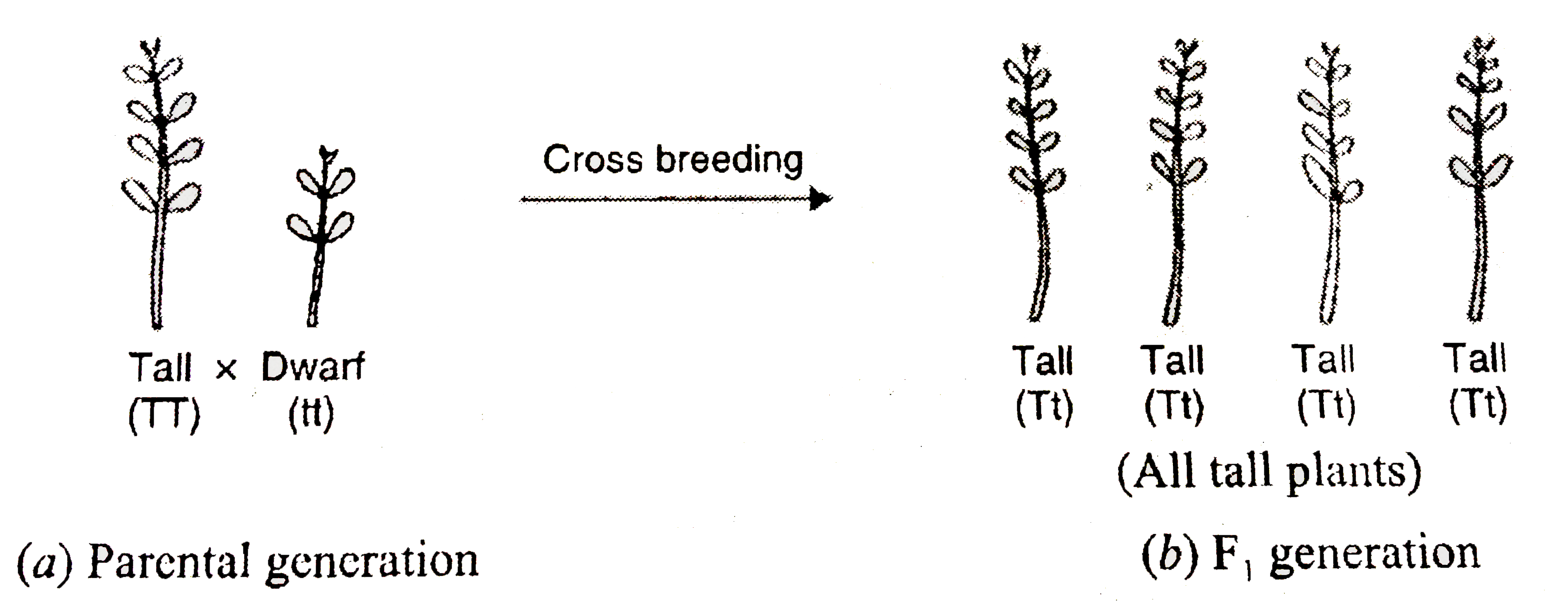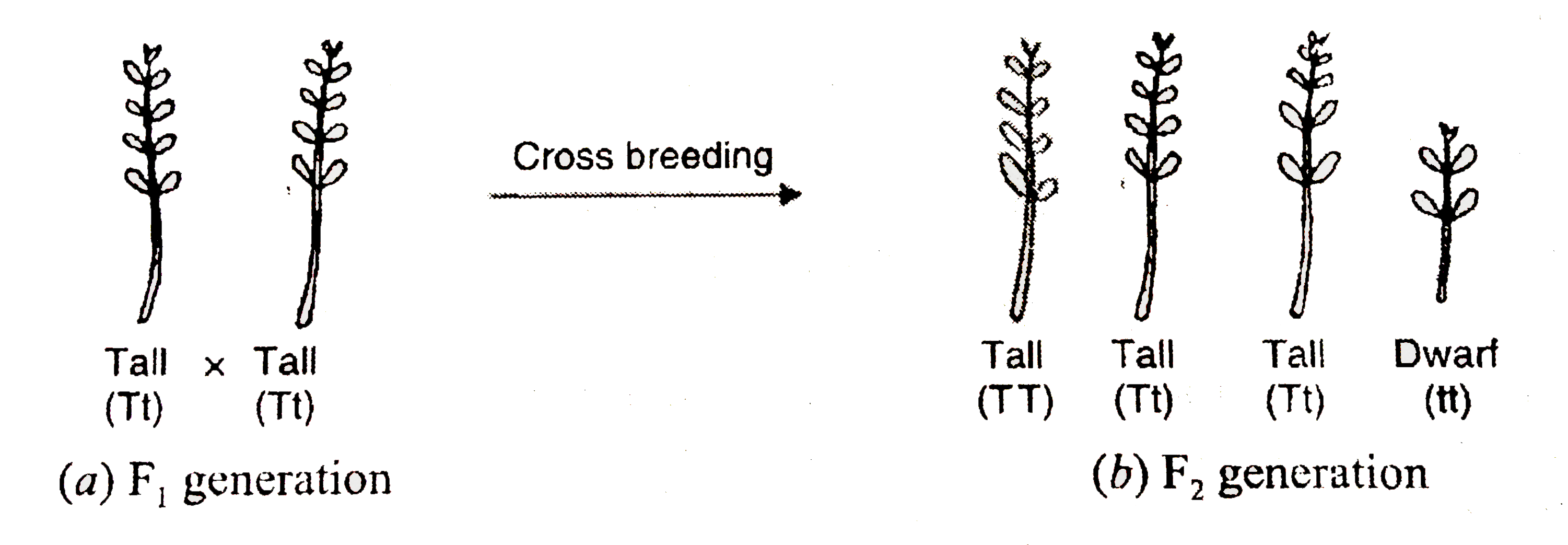How do Mendel’s experiments show that traits may be dominant or recessive?
Mendel first crossed pure-bred tall plants with pure-bred dwarf pea plants and found that only tall pea plants were produced in the first generation or F1 genrantion (see Figure 1.) No dwarf pea plants (or short plants

pea plants) were obtained in the first generation of progeny. From this Mendel concluded that the first generation (or F1 cross) showed the of only of the parent plants: tallness. The trait of other parent plant, dwarfness, did not show up in the progeny of first generation.
Mendel then crossed the tall pea plants of the first generation (F1 generation) and found that tall plants and dwarf plants were obained in the second generation (or F2 generation) in the ratio of 3:1 In other words, in the F2 generation, three-fourth plants were tall and one-fourth were dwarf (see Figure 2) . Mendel noted that the dwarf trait of the parent pea plant which had seemingly disappeared in the first generation progeny,

reappeared in the second generation . Mendel said that the trait of dwarfness of one of the parent pea plant had not been lost, it was merely concealed or supressed in the first generation to re-emerge in the second generation. Mendel called the repressed trait of 'dwarfness' as 'recessive trait' and the expressed trait of 'tallness' as the 'dominant trait' . In this way, Mendel's experiments with tall dwarf pea plants showed that the traits may be dominant or reccessive .
Topper's Solved these Questions
- HEREDITY AND EVOLUTIONBOOK - LAKHMIR SINGH & MANJIT KAURCHAPTER - HEREDITY AND EVOLUTIONEXERCISE - Questions Based on High Order Thinking Skills (HOTS)
6 Videos
- HEREDITY AND EVOLUTIONBOOK - LAKHMIR SINGH & MANJIT KAURCHAPTER - HEREDITY AND EVOLUTIONEXERCISE - Very short Answer Type Questions
1 Videos
- CONTROL AND COORDINATION BOOK - LAKHMIR SINGH & MANJIT KAURCHAPTER - CONTROL AND COORDINATION EXERCISE - Very Short Answer Type Questions
5 Videos
- HOW DO ORGANISM REPRODUCEBOOK - LAKHMIR SINGH & MANJIT KAURCHAPTER - HOW DO ORGANISM REPRODUCEEXERCISE - Exercise
23 Videos
Similar Questions
List two visible traits of garden pea that Mendel considered in his experiments. How do Mendel's experiments show that traits may be dominant of recessive?
View SolutionHow do Mendel's experiments show that the
(a) traits may be dominant or recessive,
(b) traits are inherited independently?
View Solution
Knowledge Check
In Mendel's experiment, the contrasing traits
Ashowed belending at F1 stageBShwed blending at F2 stageCDid not show any blending at either F1 or F2 stageDShowed blending at both F1 and F2stage
How do Mendel's experiments show that the
(a) traits may be dominant or recessive,
(b) traits are inherited independently?
View SolutionHow do Mendel’s experiments show that traits are inherited independently?
View SolutionHow do Mendel's experiments show that traits are inherited independently?
View SolutionHow do Mendel's experiments show that traits are inherited independentlyy?
View SolutionHow do Mendel's experiments show that traits are inherited independently?
View SolutionHow do Mendel's experiments show that traits are inherited independently ? Depict with the help of a cross.
View SolutionDominant & recessive trait
View Solution
